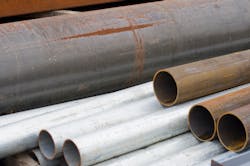Flint firm starts work to find city’s lead water pipes
FLINT, Mich. — Feb. 16, 2016 — The state of Michigan has engaged a Flint-based engineering firm to locate high-risk lead water pipes in the city, according to a press release.
Rowe Professional Services will track service lines and identify high-priority areas for replacement, noted the release.
“We need to make sure people will be able to once again turn on the tap and be able to use what comes from it,” said Michigan Governor Rick Snyder. “We’re immediately targeting high-risk, high-hazard homes to help those families. Together, we can focus on longer-term solutions.”
A supplemental budget request approved unanimously in the legislature last month includes money for utilities and can be used to survey Flint’s underground network of pipes, Snyder explained in a release.
Read more coverage of the Flint water crisis.
The governor plans to earmark $25 million for lead pipe removal in the city. Other resources could also be tapped for additional funds to replace pipes, he said.
Retired National Guard Brig. General Michael McDaniel is helping to coordinate efforts between the city of Flint, the Lansing Board of Water and Light, state and federal agencies and other stakeholders.
“Flint Mayor Karen Weaver wants this work to be completed as quickly as possible to protect Flint residents,” McDaniel said. “We’ve been working in partnership to identify the areas that need to be addressed immediately and remove lead pipes, bringing peace of mind to Flint families and make sure this never happens again.”
Last week Weaver outlined an estimated $55 million public works project that aims to remove and replace all of Flint’s residential lead service lines as quickly as possible, with priority given to high-risk households.
“We need more resources to complete the work and I urge the Legislature to move quickly in getting that money freed up so we can start work as quickly as possible,” she said.
You can find the entire release here.
